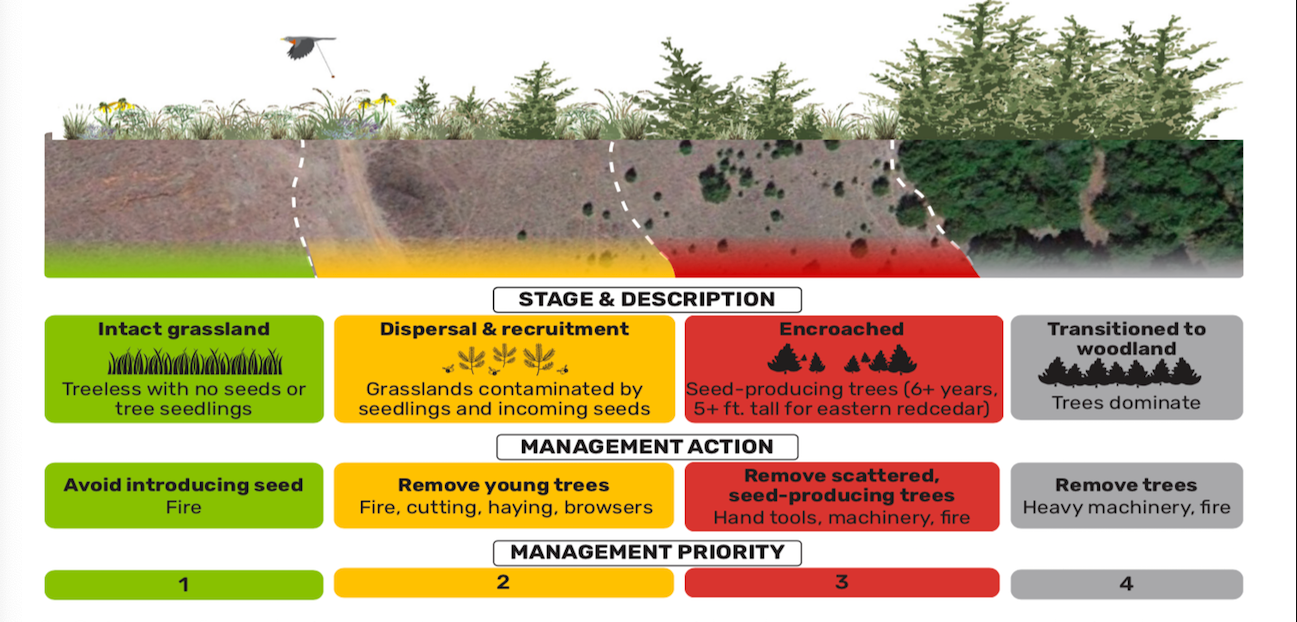The top 5 woody invasive plant species in the Great Plains Grasslands include; Eastern redcedar, Honey mesquite, Chinese tallow, Ashe juniper, and Redberry juniper. Past brush management efforts have been unable to stop or reverse the loss of grasslands at county, state, or regional scales. Traditional management efforts have assumed that there are tolerable levels of the top five woody pests in grasslands before encroachment becomes a resource concern and mechanical or chemical removal of woody plants will restore a site back to a grassland. Scientists are now recommending more integrated approaches for dealing with woody species and ending the reinvasion cycle in grasslands.
Pests are organisms that pose economic, environmental, and health risks. Integrated Pest Management (IPM) is an approach for managing these pests. IPM is used to manage pest control in croplands and applying these methods for woody encroachment can provide benefits in grasslands as well. These new IPM recommendations seek to:
- Prevent the expansion of woody plants into intact (tree free) grasslands
- Reduce existing infestations of woody pests
- Minimize the economic, environmental, and health risks associated with woody encroachment and control treatments
In order to accomplish these recommendations, IPM uses the PAMS approach. Prevent, Avoid, Monitor, and Suppress. The approach is to prevent contamination of intact grasslands, avoid transitions from seedling to seed source, monitor to reduce vulnerability, and suppress the problem, don’t wait.
For more information on the IPM approach, be sure to read the full publication here. There are two additional publications in this series; Best Management Practices for Brush Management and Rangeland Production lost to Woody Encroachment in the Great Plains. The Great Plains Grasslands Extension Partnership is a joint collaboration between range scientists and extension faculty across universities. This partnership has two additional resources on woody encroachment; Reducing Woody Encroachment in Grasslands, a Guide for Understanding Risk and Vulnerability as well as a Pocket Guide for Planning and Designing. For more information on these publications and collaboration, be sure to check out their website here.
